
After 2 weeks at home preparing my lectures I stepped aboard the ship Spirit of Enderby, operated by Heritage Expeditions in Dunedin, Otago to take up my position Working as an Expedition Guide/Zodiac Driver for 2 voyages to the Sub Antarctic Islands south of New Zealand. It’s a 50 passenger cruise ship that does expeditions to the Antarctic, the Arctic and many places in between.

Southern royal albatross
. 
These trips were bound for the New Zealand and Australian Sub Antarctic Islands. Many passengers are keen birders as these islands are home to 13% of the world’s seabirds.

The ship came into harbor at 6.30am and I was there to meet it with one of the other Russian staff. Graceie was training on this last trip and was at the gangplank as it was lowered to the wharf. We said goodbyes to the passengers and spent the rest of the day preparing the ship for the next group. Then in the evening everyone gets some time off to explore the sights of Dunedin.
At 9am the next day our passengers stepped aboard and the traditional lone bagpiper bid us farewell from the safety of land. We headed out past the Taiaroa Head northern albatross colony before turning our bows south. Nothing lies between New Zealand and the icy expanse of Antarctica except 4 small series of islands, the Snares, Auckland, Campbell and Macquarie, and these islands are our destination. The first day was lovely weather and we all made the most of it to get to know the 49 passengers. They were aged between 30 and 86 and were mostly from Australia, the States, New Zealand and Italy. Some were VERY good photographers with huge heavy cameras with lenses 50 cm or longer. One guy, Christian from France is apparently one of the best in the world and was photographing birds for a few photography magazines. Another girl was doing an article on the Sub-Antarctic islands for different magazine. These guys are working while the rest of the passengers are on board mostly to see the birds on these islands. Some people, or tickers as we call them, are here to see new species of birds so they can add them to their personal species list. Some don’t even care about the birds themselves, just weather they can “tick” it off their list.
We also had an Irish film crew whose job was to make a video showing what a typical trip in the Southern Ocean looks like. Gen, Paddy, Brian and Dee were the life of the party on board and the first 2 nights while everyone else was seasick they did their best to drink the bar dry.
Once we left the shelter of the South Island and headed south the seas became very rough and most people were very quiet or in bed seasick.

Taking a big spray over the bow on a rough day
The first stop was meant to be a zodiac cruise around the Snares Islands to look at the endemic Snares crested penguins and Buller’s albatross as well as millions of sooty shearwaters and other seabirds that breed on these islands. Sadly, the weather was so rough that we didn’t even bother going to the islands but bypassed them completely for Enderby Island, the northernmost island in the Auckland group. We spent all day on the 5th of December bashing our way into 30 knots of westerly-southwest winds and huge seas.
Of course I didn’t feel very well even though I took a Paihia Bomb to try to escape the seasickness. I spent a lot of time in bed, even eating meals, because I don’t feel sick when I’m lying right down. I’m so lucky I can eat almost every meal because then I don’t get weak after a few days at sea. Being so skinny I can’t really miss a meal without slowly disappearing into a shadow!!

Enderby Island was amazing and everyone had an great time. There were about 15 sealions waiting to meet us and they chased everyone around the beach. They are quite scary when they bluff-charge at you, then stop half a metre away with a big snort and a toothy growl.

Enderby Island

Grumpy sea lion on the beach

Female sea lion in the rata forest
My job was to keep them away from the passengers with a long stick. If you hold a stick out in front of you they stop 50cm from the end of the stick, instead of 50 cm from you. We did a 13 km walk around Enderby Island with most of the passengers. There’s not really a track; mostly you just follow the coastline.
The wildlife is amazing. First you follow a boardwalk to the other side of the island and see Auckland Island teal, southern royal albatross nesting in the tussock, endemic red- and yellow-crowned parakeets, sealions, yellow-eyed penguins, pipits, endemic tomtits, endemic snipe, light-mantled sooty albatross flying and nesting, endemic shags and megaherb fields. The rest of the walk around the island gives you more opportunity of seeing all these species and more amazing megaherb fields of Bulbinella and Anisotome latifolia that were in full bloom when we were there in December.

Lunch stop in the tussock
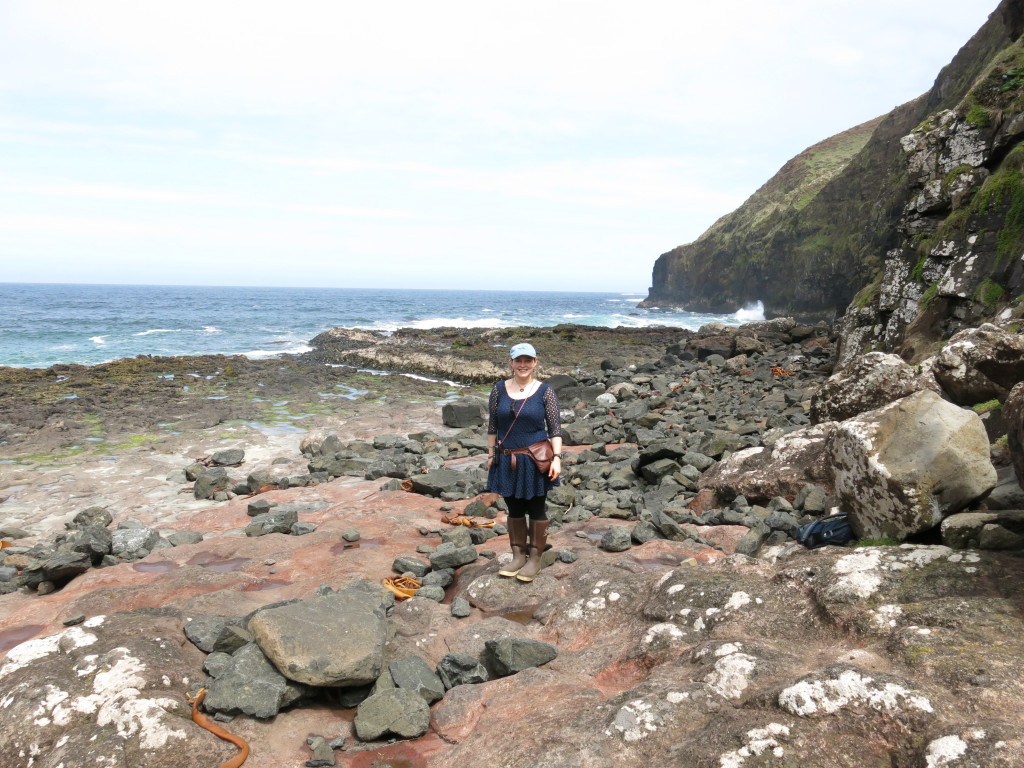

Rata forest

Bulbinella megaherb
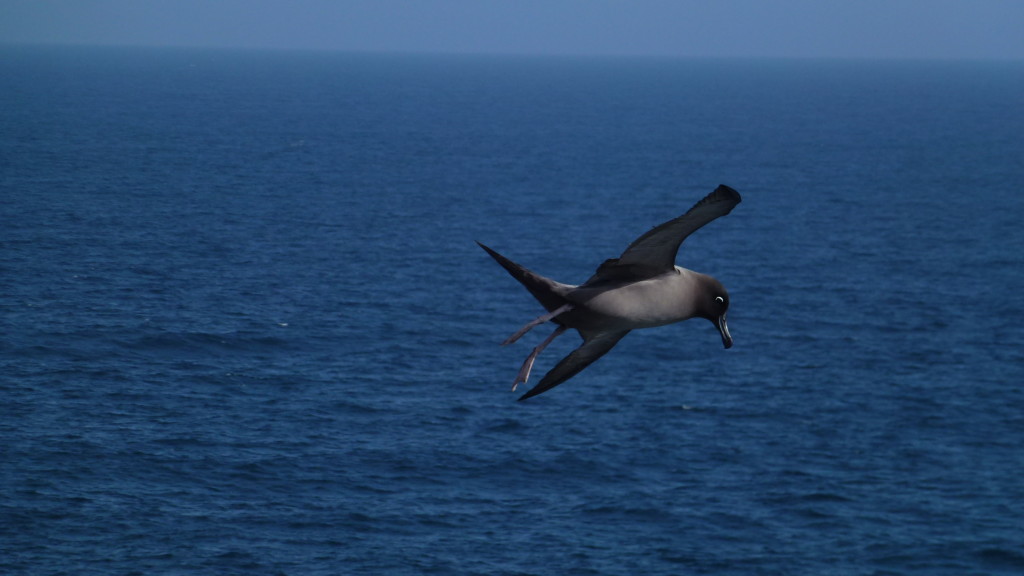
Light-mantled sooty albatross soaring above the cliffs

Anisotome latifolia

Gentians

Red-crowned parakeets

Western cliffs


Yellow-eyed penguins

One of the passengers with an old finger post. They were used in the 1800s to point to the closest food depot for shipwrecked sailors.

On the 12km walk around Enderby Island

The northern cliffs of Enderby Island
We got everyone back to the ship and after a well-earned dinner we motored down the sheltered eastern side of Auckland Island arriving in Carnley Harbor the next morning. We cruised around the harbor after breakfast, most notably going past the site of the 1863 shipwreck of the Grafton. We anchored in Tagua Bay sheltered from the westerly and took everyone ashore. There were sealions on the beach which chased everyone around for a while before we all took a walk up to a small hut and a viewing area of Carnley Harbor. This was my first day zodiac driving for work!! Lots of fun. Sometimes big wind gusts came through and you had to get into the lee of the ship to offload passengers comfortably onto the gangway. We had lunch as we came out of the heads of Carnley Harbor and as we turned our nose to Macquarie Island the ship began to pitch and roll again.


The coast watchers’ look out in WW2

The remains of the wreck of the Grafton
We fought a very solid southwesterly for the next day and a half to Macquarie Island. A lot of people were sick with just a few hardy photographers on the back deck taking some amazing photographs of the birds following us. Usually we do lectures for the passengers on the ocean legs of the voyage but it was way too rough for this. Most people were in bed.
We arrived at Macquarie Island just in time for a light northeasterly to blow in which made our landing at Buckles Bay difficult. This is the site of the Australian Research Station and 5 of their staff actually come to guide our passengers around the area.


Graceie and myself with Mitch, one of the other zodiac drivers

We got to sea piles of elephant seals, snorting and farting at us. There were skua eating 2 dead elephant seals on the beach, and king penguins, more light-mantled sooty albatross, giant petrels and gentoo penguins with their bright orange/red feet. Cutest of all are the baby elephant seals.
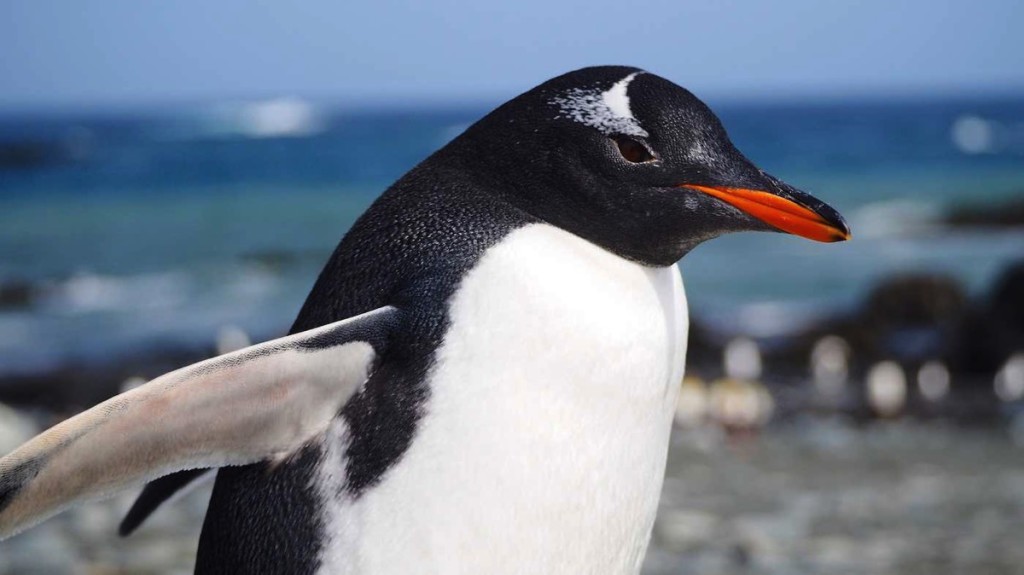
Gentoo penguin
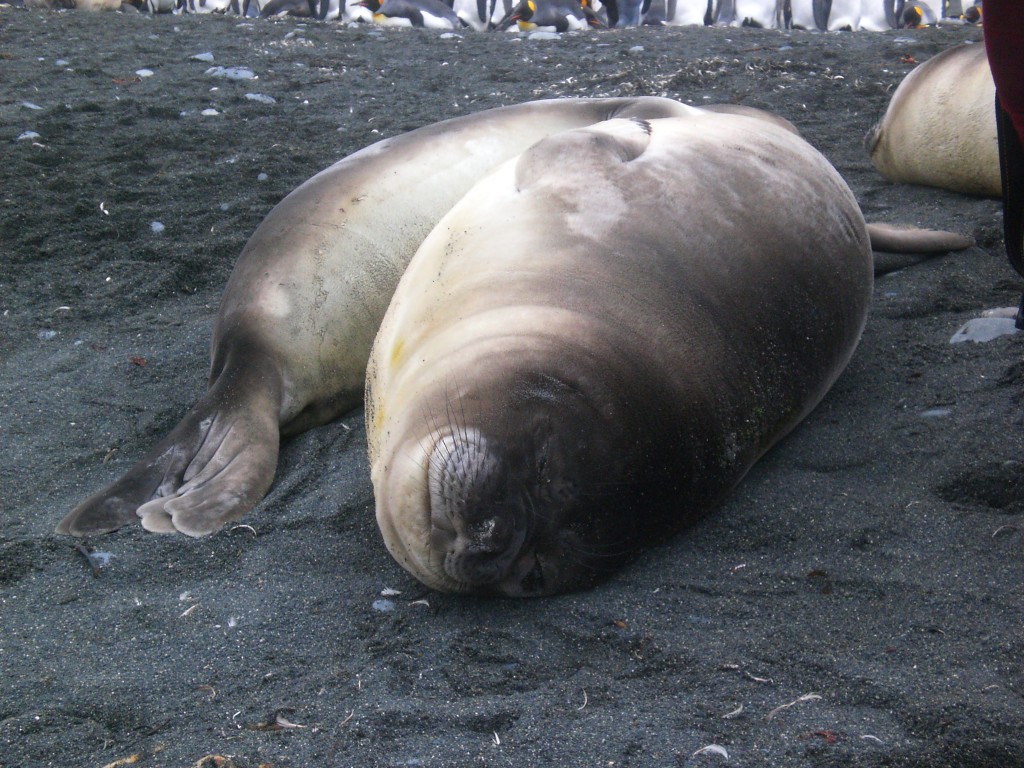
Baby elephant seals

King penguins
You are not allowed to approach the wildlife to less than 15m but if you just sit down on the beach and wait, often their curiosity will take over. They may come to you and sometimes give you a slobbery kiss or cuddle! After tea and scones at the Australian base we watched the release of a weather balloon, then took everyone back to the ship for a late lunch.
Next morning we landed at Sandy Bay. I was driving zodiacs again and this time it was quite rough. Sandy Bay is an amazing place. In one direction you have 1000’s of royal penguins sitting on the beach or coming and going from the nesting colony; in the other, 1000’s of king penguins and their brown chicks standing on the beach. In the middle 50-100 elephant seals sleep on the beach or play-fight with each other, when they have the energy. There are lots of baby elephant seals here too and 2 of them spent 2 hours trying to climb onto a pile of backpacks with our emergency gear. If you like anything to do with photography or wildlife this beach will blow your mind!! Needless to say, everyone had a smile at lunch that day.

Hundreds and thousands of king penguins on the beach at Sandy Bay
In the afternoon and the following day we were once again in the ocean headed for Campbell Island. This time however the strong westerly was directly behind us giving us a very fast smooth passage.
The next morning we awoke in the calm of Perseverance Harbor, the site of the abandoned Campbell Island research station. With packed lunches in hand everyone headed up the boardwalk to watch southern royal albatross soaring over the megaherb fields on the ridgeline above the harbor. Some people sat and watched for hours as this incredible display went on. The wind was perfect for flying and the albatross went backwards and forwards. Sometimes they would land in little gaming groups or 2-5, dancing and hopping around.





We also say a few rare endemic snipe, lots of pipits, tomtits, endemic teal and shag, light-mantled sooty albatross, skua, giant petrels and grumpy sealions. This day was the highlight of the trip for most people.


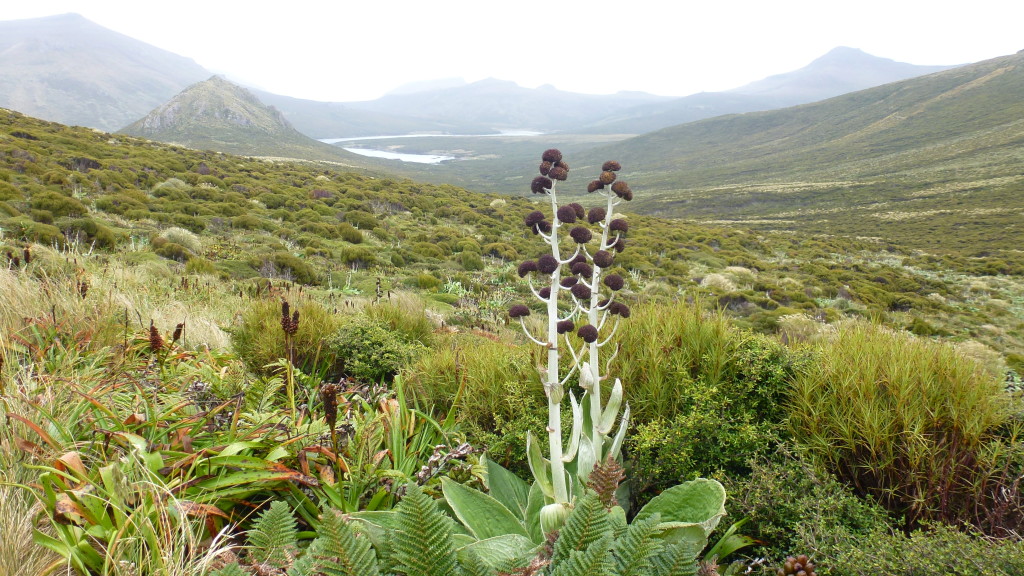

We had a fun Zodiac cruise around the inner Perseverance Harbor in the rain the next morning. Everyone got soaked but had an amazing time followed by a hot shower.
The voyage back to Invercargill was rolly with the westerly coming across us this time. It wasn’t too uncomfortable and I gave a lecture to the passengers about weather forecasting in the Southern Ocean and the El Nino weather system we were experiencing with constant westerly winds.
We got too look at Snares Island this time from the ship. Sadly it was too rough for a zodiac cruise but at least everyone got to see it. The sky was black with sooty shearwaters returning to the island and with binoculars, we saw hundreds of Snares crested penguins in the water and along the shore.

Back in Bluff
We picked up the pilot at the entrance to Bluff Harbor in the early morning and by 7.30 am we were alongside the dock. There were sad goodbyes and the passengers ran from the ship to the bus in pouring rain. For the passengers it was the end of their adventure but for the staff it was the start of round 2. The second trip was similar to the first except that we didn’t go to Macquarie Island. It is a shame to miss Macquarie but you avoid punching for 2 days into the strong westerly sea to get there. We had 30 passengers instead of 50 this time, and a lot of them were younger. We had 6 Enderby Trust scholarship winners on board. This is a scholarship offered by Rodney Russ for people between ages 20-30 who are keen on the sub-Antarctic islands. They are usually fun outdoors/conservation-minded people like myself so it was a fun voyage. Again we missed the Snares Islands but at least we got to see it for an hour. The megaherbs at Enderby Island were in full bloom again and in Carnley Harbor we had calmer conditions so we zodiac-cruised the northern arm for about 3 hours. We saw the Elarsen clearing and the site of the wreck of the Grafton, even the remains of the ship that are still there.
At Campbell Island I went with Rodney and a group of 18 on the “Long Walk” option across to North West Bay. Megaherb fields are amazing and for half an hour you walk along the top of huge westerly-facing white cliffs. Lunch was in a small bay watching a bunch of grumpy sealions fight over their patch of beach that also had skua, elephant seals and a lone leopard seal on it. And again we got to see the majestic southern royal albatross soaring overhead.
The next morning the keenest of us got up at 5.30 and climbed Mount Honey. At 558 m it is the highest point of the island and New Zealand’s southern-most peak. We got some amazing views on the way up but the top was in cloud so we couldn’t see the view over the other side of the mountain. Again with such a fun group it didn’t matter, and the scholarship winners had an amazing time photographing megaherbs, weevils and soaring albatross.
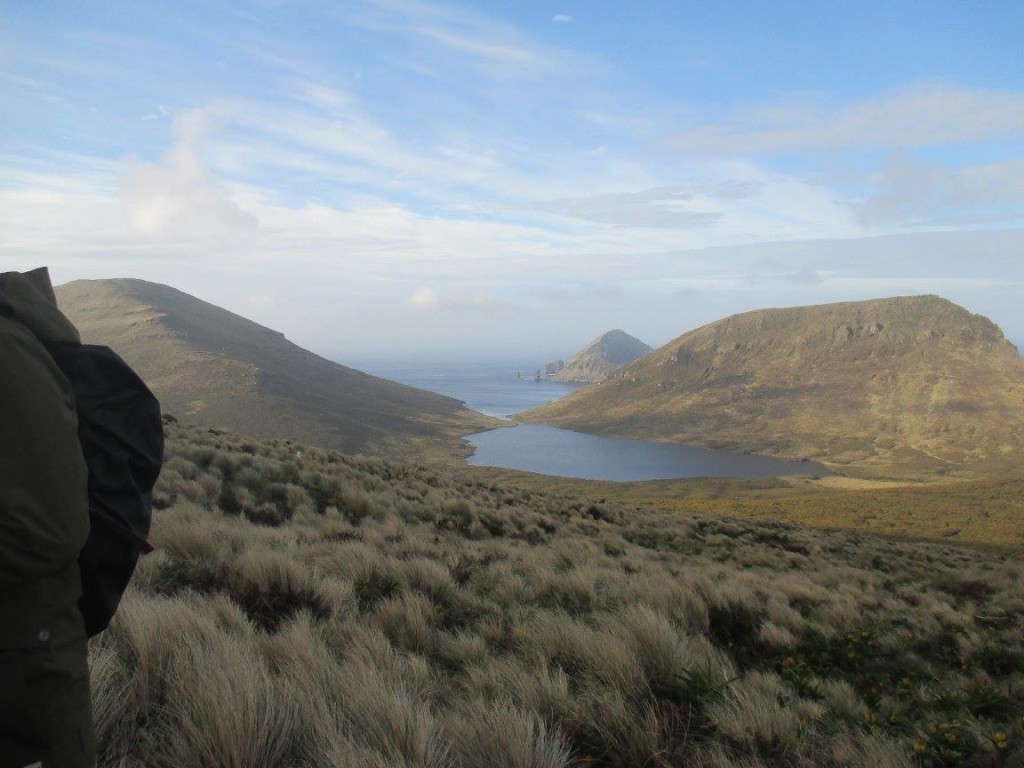
The group standing at the top of Mt Honey in the cloud!


Pleurophyllum hookeri
Because Rodney Russ and Heritage Expeditions respect these islands so much and have quite small groups of passengers (never more than 50) they have been given permission to explore more of these islands than any other cruise company that goes this far south. Rodney helped to eradicate pests off these islands in the 70’s and 80’s and they help out with anything that needs doing in the area. For example, we took 200 L of fuel down to Campbell Island on the second trip for the Department of Conservation. Heritage also keeps the helicopter fuel depots up to date on the islands for rescue helicopters to use when they have to do rescues in this part of the world.
I really enjoyed my job Working as an Expedition guide/Zodiac Driver. It was much better than my previous trips into the Southern Ocean as a cold-galley chef in the kitchen. Graceie also liked the hotel manager role as she is very good at keeping passengers happy.
